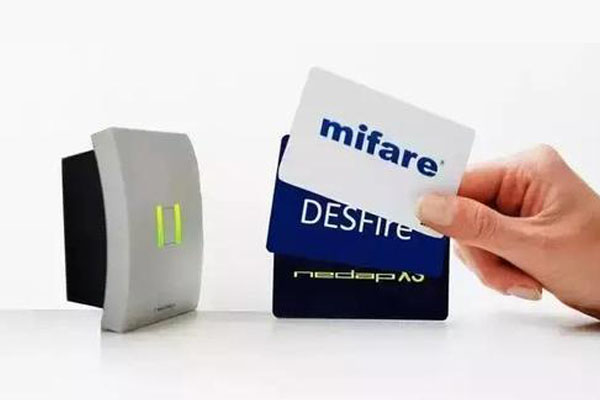According to NXP’s official explanation, MIFARE is a brand for contactless IC products used in numerous applications worldwide. Next to the dedicated product families, MIFARE also includes implementations on secure dual interface smart card ICs. Their on board PKI crypto-engine drives the secure combination of any desired eco systems on a single credential enabling real multi-application.
Then what is MIFARE card?
MIFARE card usually means a paper or plastic card with contactless chip of MIFARE Classic 1K, which is also called MIFARE S50.
But still, there are a few different series for MIFARE contactless chips; MF0, MF1, MF2 and MF3.
However, all MIFARE chips are 13.56MHz HF, high frequency.
1. MF0 – MIFARE Ultralight
There are 3 chip types under MF0. MIFARE Ultralight Nano, MIFARE Ultralight EV1 and MIFARE Ultralight C.
MIFARE Ultralight Nano has the smallest memory within MIFARE contactless tag IC family, 40 bytes;
MIFARE Ultralight EV1 has 2 memories, the smaller memory, 48 bytes, is more frequently used.
It is usually used for hotel’s room key card or smart paper ticket for transportation;
MIFARE Ultralight C sometimes also used for hotel’s room key card, and event ticketing.
MF0, MIFARE Ultralight chips are developed for public transportation, event ticketing, loyalty programs and limited use tickets.
MIFARE Ultralight C is available for 3KDES, thus it has the highest security level among these 3 chips.
2. MF1 – MIFARE Classic EV1
There are 2 chip types under MF1, MIFARE Classic EV1 1K and MIFARE Classic EV1 4K, which is also known as MIFARE S50 and MIFARE S70 respectively.
MIFARE Classic EV1 1K should be the most frequently used chip for hotel room key cards, while MIFARE Classic EV1 4K is more usually used as hotel’s staff card since it has a larger memory that allows much more information stored.
However, MIFARE Classic EV1 chips are not supported by most NFC devices. As a result, if you are using MIFARE Classic EV1 1K cards as your hotel key card, and want to combine your room access with NFC enabled, you will have to develop another software.
3. MF2 – MIFARE Plus
There are 5 chip types under MF2, which are MIFARE Plus SE, MIFARE Plus X 2K, MIFARE Plus X 4K, MIFARE Plus EV1 2K, MIFARE Plus EV1 4K.
MIFARE Plus series chips are available for Crypto-1, AES encryption, so the security level is higher than MF0 and MF1, which are MIFARE Ultralight and MIFARE Classic EV1 series.
MIFARE Plus cards are usually used for public transportation, campus cards and access management.
4. MF3 – MIFARE DESFire
MIFARE DESFire has the most chip types under MIFARE chips, there are 9 chip types in total.
MIFARE DESFire Light, MIFARE DESFire EV1 2K, MIFARE DESFire EV1 4K, MIFARE DESFire EV1 8K, MIFARE DESFire EV2 2K, MIFARE DESFire EV2 4K, MIFARE DESFire EV2 8K, MIFARE DESFire EV2 16K, MIFARE DESFire EV2 32K.
This series have the highest security level among all MIFARE chips, except for MIFARE DESFire Light, and the momery of this chip is small, only 640 bytes.
All EV1 and EV2 chips are available for DES, 2K3DES, 3K3DES, AES encryption.
MF3, MIFARE DESFire chips are developed for smart city platform, advanced mobility multi-applications, micropayment, loyalty programs, access management.
Since it’s the highest security level among MIFARE chips, the cost is also the highest.
If you are still not sure which MIFARE card you are exactly using, we are happy to receive a sample card for double checking. Or ask for a free sample pack for testing.
P.S.: Sometimes the chip has 2 input capacitances for options, a regular input capacitance of 17 pF or a higher input capacitance of 50 or 70 pF. How to choose the suitable one for your application? Here is a little tip that you can refer to.
If you are using a card or paper ticket, normally a regular input capacitance 17 pF should be good enough;
If you are using a wristband, then normally a higher input capacitance of 50 or 70 pF will give a better performance.
Check the image below to compare the difference between all MIFARE chips. And contact our expert to customize your MIFARE card now.

.png)
